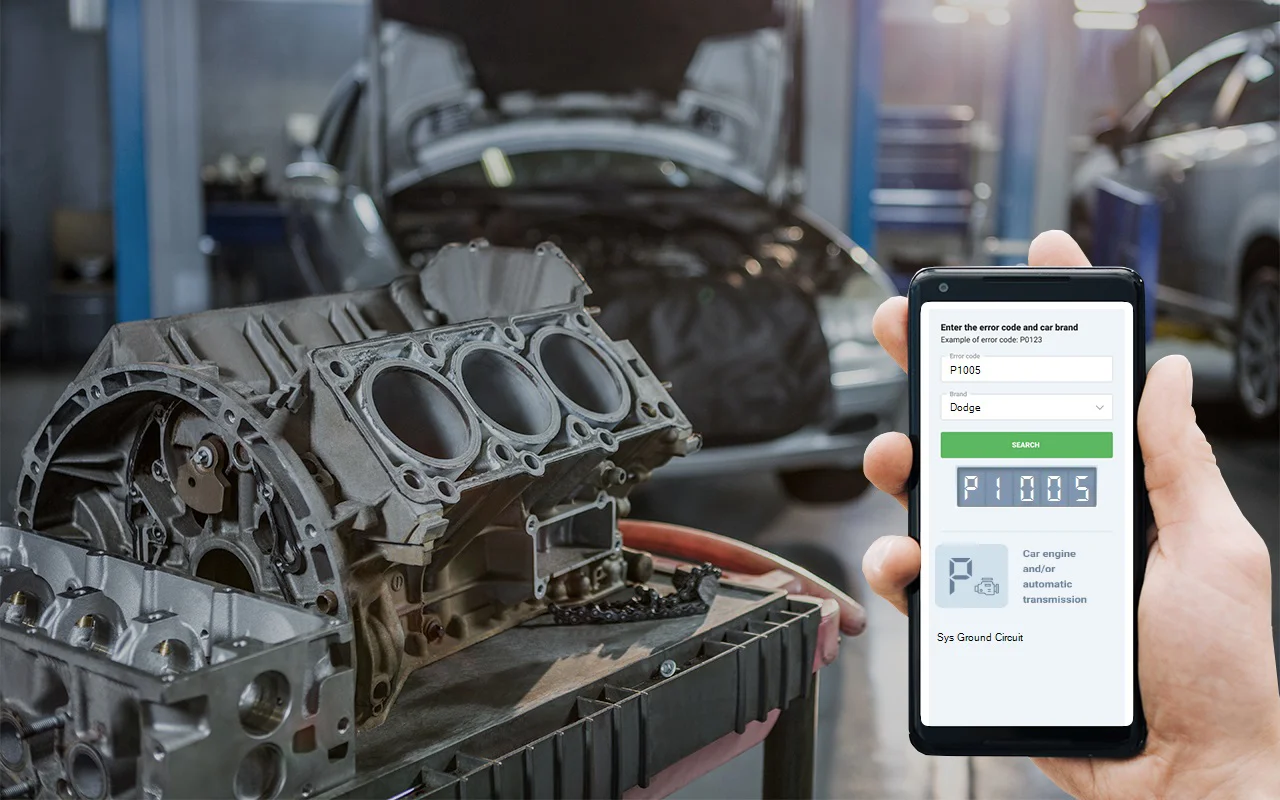What Causes the P1005 Code?
The P1005 code can be triggered by a number of issues related to the system ground circuit. Some of the most common causes include:
- Loose or corroded ground connections: The most frequent cause of the P1005 code is a loose, dirty, or corroded ground connection. This can occur over time, especially in older Dodge vehicles, including the Journey.
- Damaged wiring: Wiring issues, such as frayed or broken wires, can disrupt the ground circuit, leading to incorrect voltage readings and performance issues.
- Faulty ground strap: The ground strap connects components like the engine to the vehicle’s frame or battery, ensuring a stable electrical connection. If the strap is worn or damaged, it can trigger the P1005 code.
- Electrical component failure: The problem could also stem from a malfunctioning electrical component, like the ECU, that isn’t grounding properly.
Any of these factors can trigger the P1005 code, causing electrical performance issues in your vehicle.
Symptoms of the DTC P1005 Dodge
When your Dodge triggers the P1005 error code, you may experience several symptoms indicating that the system ground circuit is malfunctioning:
- Illuminated check engine light (CEL)
- Electrical components, such as lights, not working properly or flickering
- Difficulty starting the engine or intermittent starting issues
- Unstable or erratic engine performance
- Battery draining quicker than usual
- Potential stalling or hesitation while driving
If you notice any of these symptoms, it’s crucial to get your vehicle checked to avoid further damage.
While the P1005 code can appear on various Dodge models, it has been observed more frequently on the Dodge Journey in particular. This is mainly due to the Journey's electrical system, which can experience wear and tear on its ground circuit over time. The specific design of the system ground circuit in the Journey, combined with factors like age, environmental exposure, and driving conditions, contributes to this issue being more common in this model. As a result, Dodge Journey owners should be particularly aware of the P1005 code and its potential implications.


How to Fix the P1005 Code in Dodge
Fixing the P1005 code typically involves diagnosing and repairing the system ground circuit. Here’s how you can go about it:
- Step 1: Inspect the ground connections – Check the battery terminals, engine block, and chassis for loose or corroded connections. Clean or tighten these connections as needed.
- Step 2: Check the wiring – Look for any signs of damaged or frayed wiring in the ground circuit, especially around the ECU or other components. Repair or replace any damaged wiring.
- Step 3: Inspect the ground strap – Make sure the ground strap is securely attached to both the engine and the vehicle frame. Replace it if it’s damaged or worn.
- Step 4: Test the ECU – If the issue seems to be related to the ECU, have it tested to ensure it’s functioning correctly. If needed, replace the ECU.
- Step 5: Reset the error code – After performing the necessary repairs, use an OBD-II scanner to reset the error code. If the repairs are successful, the check engine light should go off.
If you’re not comfortable doing these repairs yourself, it’s recommended to take your Dodge to a certified mechanic to diagnose and fix the issue.
Conclusion
By following the diagnostic and repair steps outlined above, you can resolve the P1005 error and restore your Dodge’s electrical systems to proper working condition. Early detection and repair will help keep your vehicle running smoothly and prevent long-term issues down the road.
Video for "Error p1005" on YouTube
The following error codes are often searched for
Solution for error p1005 Dodge in dtc-errors.com
Errors OBD-II can be useful for diagnostics of issues with the car. If you encounter with a error code p1005 in Dodge, it is essential to understand that it provides information about potential defects in the systems of your automobile. The error p1005 for Dodge may indicate issues. This error is found in the following models of this manufacturer: Dodge.
p1005 Dodge diagnosis in a workshop
To identify and eliminate with greater precision the cause of the DTC in Dodge, it is recommended to consult professionals at an automotive workshop. Qualified technicians have the expertise and tools necessary to carry out a thorough analysis and the corresponding repair, which will help prevent further damage to your car. Do not ignore code p1005 in Dodge, as it informs about a possible issue that could impact the performance and safety of your car. Seeking help promptly will give you the opportunity to ensure your car in good working condition and extend its lifespan.






